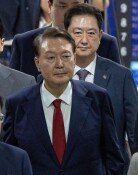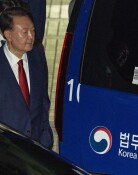U.S. Troop Relocation to be Delayed until 2008
U.S. Troop Relocation to be Delayed until 2008
Posted October. 04, 2004 21:47,
South Korea and the United States reached an agreement on postponing the reduction of U.S. troops from the end of 2005 to the end of 2008. The U.S. initially proposed to remove its troops from South Korea by the end of 2005. It was revealed on Sunday that both sides also struck a deal on the size of the cut at around 12,500 troops.
Accepting Koreas opposition to the relocation of multiple launch rocket system (MLRS) batteries, positioned near the buffer border of the two Koreas where the North`s artillery is currently aligned, the U.S. will reportedly maintain both of its MLRS battalions, one of which it had originally planned to relocate.
The Yonhap News reported, quoting an official at the U.S. Department of Defense, that the negotiations between South Korea and the U.S. had been going well since both sides began openly exchanging their positions on the matter. Since the talks are reaching their final stage, an announcement will be made within seven or 10 days, it added.
The official also said, Details about relocation schedules and military units to be removed will be released at the announcement without revealing confidential information on military operations.
At a previous meeting on September 30 with a group headed by Chun Jung-bae, floor leader of the ruling Uri Party, U.S. Deputy Secretary of Defense Paul Wolfowitz made a comment on the U.S. troop pullout, saying, We will fully reflect on Koreas position at the final round of the talks, and we are confident that we will draw up a satisfying conclusion for Korea, which suggested the delay of U.S. troops reduction.
If the two sides strike a deal, it is expected that the U.S. will initially withdraw 5,000 troops, including 3,600 troops transferred to Iraq, and subsequently withdraw an additional group of troops in 2006 and 2008, respectively.
The additional pullout of key U.S. weaponry, including an Apache helicopter battalion, will be delayed to as late a date as possible.
It is analyzed that the delay of the relocation is part of the U.S. efforts to help strengthen Korean military forces and reschedule the U.S. military realignment in South Korea, considering Koreas concerns over a possible security vacuum and a weakened deterrence on the Korean Peninsula.
Soon-Taek Kwon maypole@donga.com







